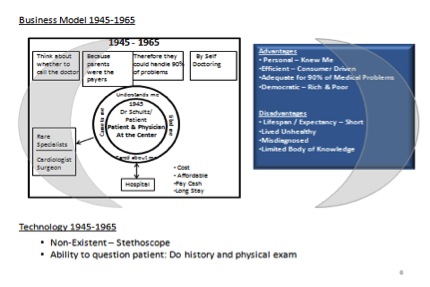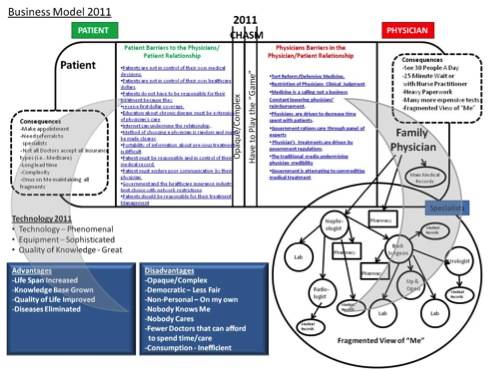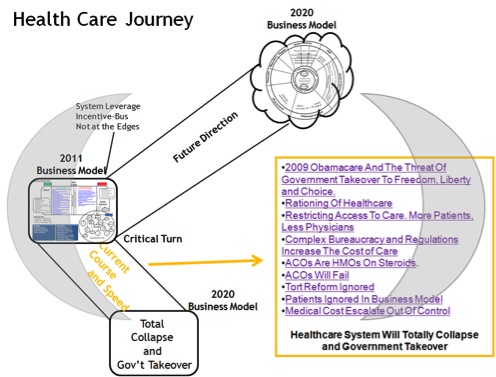Why Aren’t Physicians Upset About Obamacare?
IF YOU CANNOT SEE THE YOU TUBE PRESENTED IN THIS BLOG POST IN YOUR EMAIL OR YOUR RSS FEED PLEASE CLICK ON TO THE TITLE OF THIS BLOG POST ABOVE TO CONNECT TO THE ORIGINAL ONLINE BLOG POST OR OPEN THE URLS POSTED IN THE EMAIL OR RSS FEED.
Stanley Feld M.D.,FACP,MACE
Physicians are upset. They have been marginalized during the entire healthcare reform debate.
Patients are upset about Obamacare. Many states are upset about Obamacare. These states are suing President Obama and his administration for impinging on states rights.
Recent approval /disapproval polls on average showed that patients disapprove of Obamacare by a 43.1%/52.2% average..
“Do you approve/disapprove of Obama's handling of health care?
Some of the polls included in the average may be outdated since the latest poll for each of the pollsters are averaged in. “
|
Pollster |
Date |
Approve |
Disapprove |
|
AVERAGE |
|
43.1% |
52.2% |
|
CNN ORC |
3/25-28/10 |
45 |
54 |
|
ABC Washington Post |
3/23-26/10 |
48 |
49 |
|
Quinnipiac |
3/22-23/10 |
44 |
50 |
|
CBS NYT |
3/22-23/10 |
47 |
48 |
|
NBC |
3/11,13-14/10 |
41 |
57 |
|
AP GFK |
3/3-8/10 |
49 |
46 |
|
Fox |
2/23-24/10 |
37 |
56 |
|
USA Today Gallup |
2/1-3/10 |
36 |
60 |
|
Bloomberg |
12/3-7/09 |
40 |
53 |
|
Marist |
10/7,8&12/09 |
44 |
49 |
A critical question in all of this is, “ Why are we not hearing from physicians?”
There are several reasons for the public not hearing from physicians.
First, the is practicing physicians’ input has been muted or ignored by President Obama, his administration and the traditional media.
The members of the Association of American Physicians and Surgeons are on the front lines of caring for patients and would like to discuss the bill's effect on the patient-doctor relationship. Media coverage has been poor or non existant.
This You Tube expresses the AAPS view of Obamacare’s effect on the patient-physician relationship. It features Congressman Michael C Burgess, MD, Jane Orient, MD, & Richard Amerling, MD.. This briefing was held in the Canon House office Building in Washington DC on May 26, 2011.
For many years physicians relied on the AMA for leadership. There is no leadership from the AMA at this time.
Second, the majority of physicians don’t see eye to eye with the AMA on Obamacare. There have been many reports of physicians fleeing the AMA because of a lack of leadership and advocacy for practicing physicians’ views. The AMA has not represent physicians and their patients’ interests.
“Obamacare changes the health care system in several ways that harm physicians. It also fails to address the pivotal issues facing physicians today—for example, low government reimbursement rates that fail to cover the cost of care, or the need for state-by-state medical malpractice reform.”
The AMA is out of touch with practicing physicians’ views.
During the health care reform debate, the American Medical Association (AMA) emerged as one of the new law’s supporters. But rather than symbolizing physicians’ support for the left’s health care overhaul, the AMA’s stance on Obamacare just proves how detached the organization has become from physicians’ best interests.
A physician survey by Jackson and Coker affirms this growing gap between the AMA and physicians the AMA should represent. The survey showed:
- Only 11 percent of the physicians surveyed agreed that “the AMA’s stance and actions represent my views.” Of those who are members of the AMA, only 40 percent agreed.
- 13 percent of all physicians, and just 35 percent of AMA members, agreed with the AMA’s position on health reform; 70 percent disagreed.
- Of those who had dropped their AMA membership, 47 percent said it was because of the AMA’s support for Obamacare, and 43 percent who said AMA’s ideology was too far to the left.
- Only 15 percent of physicians considered the AMA a successful advocate of physicians’ issues. 75 percent of physicians surveyed said that “the AMA no long represents physicians.
Physicians need a more representative voice. Sermo has been moderately successful but has not been permitted to have an appropriate hearing in the traditional media.
A recent polling underscores deep physicians' discontent.
Athena Health and Sermo did a recent survey of physicians
1. 79 percent of physicians are less optimistic about the future of medicine.
2. 66 percent indicated that they would consider dropping out of government health programs.
3. 53 percent would consider opting out of insurance altogether.
Third-party payment arrangements have compromised the independence and integrity of the medical profession.
Obamacare will reinforce the worst of these features in the present healthcare system. Physicians will be subject to more government regulation and oversight and more bureaucratic direction.
At the same time, Obamacare is ignoring the most important issues facing physicians such as Tort Reform, third party payment reform and increasing government red tape.
Physicians will be more dependent on unreliable government reimbursement for medical services. Physicians are presently under tremendous pressure. It will only become worse under Obamacare.
Dr. Martha Boone is an Atlanta urologist. She explains the consequences of the Obamacare. She explains her fears about Obamacare.
Dr. Boone has moved to a less-expensive office to avoid dropping Medicare patients or laying off an employee.
The is a wonderful You Tube.
Medicare pays physicians 50-80 percent of the negotiated private sector fee.
The negotiated private fees are at least 50% less than the customary fees.
Medicaid pays 15-30% of the already reduced private sector fees. Medicare payment has resulted in sporadic access problems for Medicare patients,
Obamacare is going to lower these fees. We are already seeing serious problems with access to care for Medicaid patients. The result is an increase in hospital emergency room use. This increases the emergency room prices for the private sector as it decreases private sector ER capacity. It also increase healthcare insurance premiums.
Sixty seven (67) percent of primary care physicians said that under current conditions new Medicaid enrollees would not be able to find a “suitable primary care physician” in their area.
“Like most seniors, Ann Lorenz relies on Medicare as she copes with serious health care challenges, including Parkinson's Disease. Ann sees a number of doctors and depends on a variety of prescription drugs and therapies to stay independent.
She worries that Obamacare threatens her access to doctors, treatment options and insurance plans and her neurologist shares her concerns."
“Obamacare does not address physicians’ most pressing concerns, such as tort reform, and it worsens the already painful problems with third-party payment and government red tape.”
President Obama has also ignored the states’ pleas.
Governor Mitch Daniels of Indiana has been a leader in health care reform. He has made a lot of progress in reforming healthcare in Indiana. Obamacare is going to destroy his progress in healthcare reform.
Governor Daniels is speaking out and urging his fellow governors to take a serious look at the threat posed by Obamacare.
Individual practicing physicians are trying to stimulate public uprising through the media with minimal success.
Dr. Marc Seigel reported that 74% of doctors will retire, work part-time or quit if Obamacare takes effect.
This is not what Pelosi and Obama promised.
Politicians do not ask physicians and physicians do not have a powerful representative. Physicians are never included in the healthcare policy discussions.
Physicians are going to have to figure out a way to get their patients to get President Obama’s attention.
Here is one idea: Physicians could give their patients a list of talking points that patients could broadcast to their email and Facebook friends.
All of these patients and their friends could be instructed to send these talking points to their local newspapers, their congressmen and President Obama.It would make everyone aware of how physicians feel about Obamacare.
You can help your physician be heard!
Heightening public awareness usually gets politicians to rethink their destructive policies. Obamacare is one such a destructive policy.
The opinions expressed in the blog “Repairing The Healthcare System” are, mine and mine alone
Please have a friend subscribe




